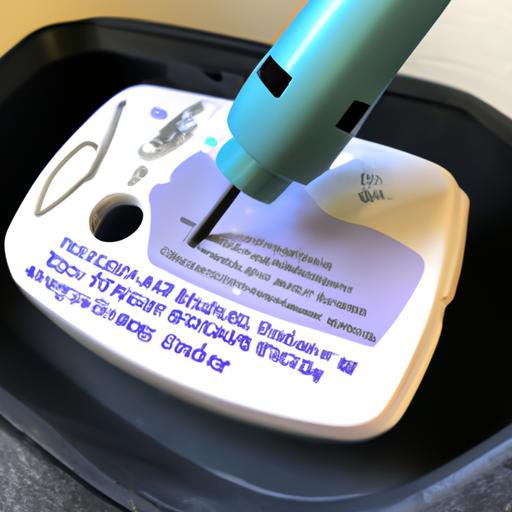Discover how to prevent and remove mold in your Waterpik water flosser. Learn about the risks, maintenance tips, and DIY methods to keep it mold-free.
Introduction
When it comes to maintaining oral hygiene, Waterpik water flossers have become increasingly popular due to their effectiveness in removing plaque and improving gum health. However, it is essential to address a concerning issue that can arise with these devices – mold growth in water flossers. In this article, we will explore the causes, potential health risks, prevention, maintenance tips, and steps to deal with mold in your Waterpik water flosser.

Mold growth in a Waterpik water flosser
Understanding Mold in Waterpik Water Flosser
What is Mold?
Mold is a type of fungus that thrives in moist environments, and unfortunately, your Waterpik water flosser can provide the ideal breeding ground. Mold spores can easily contaminate the water reservoir and other components of the device, leading to mold growth if not properly maintained.
Causes of Mold Growth in Waterpik Water Flosser
Several factors contribute to the growth of mold in a Waterpik water flosser. Improper cleaning and drying, leaving water stagnant in the reservoir, and using unfiltered tap water are common culprits. Additionally, warm and humid environments can accelerate mold growth, making it crucial to take preventive measures.
Potential Health Risks Associated with Mold in Water Flosser
Mold growth in your Waterpik water flosser can pose health risks, especially for individuals with allergies, asthma, or weakened immune systems. Inhaling mold spores or coming into contact with contaminated water can lead to respiratory issues, allergic reactions, and even infections. It is therefore essential to address this issue promptly.
Common Signs of Mold Presence in a Waterpik Water Flosser
Identifying the presence of mold in your Waterpik water flosser is crucial to take necessary action. Some common signs include visible mold growth in the reservoir or on the components, a musty odor emanating from the device, or the presence of slimy residue. If you notice any of these signs, it is essential to address the issue promptly.

Cleaning and maintenance tips for a Waterpik water flosser
Prevention and Maintenance Tips
To ensure a mold-free Waterpik water flosser, it is essential to follow a regular cleaning and maintenance routine. Here are some tips to help you prevent mold growth:
Regular Cleaning and Maintenance Routine
Make it a habit to clean your Waterpik water flosser thoroughly after each use. Empty the reservoir, disassemble the components, and rinse them thoroughly with warm water. Use a mild detergent or vinegar solution to clean the parts, ensuring you remove any residue or potential mold spores.
Recommended Cleaning Products and Techniques
To effectively clean your Waterpik water flosser, it is recommended to use specific cleaning products designed for removing mold and mildew. Look for cleaning solutions that are safe for use with oral hygiene devices and follow the instructions provided by the manufacturer.
Proper Drying and Storage Practices
After each use, ensure that all components of your Waterpik water flosser are properly dried before reassembling or storing them. Leaving any moisture behind can promote mold growth. Consider using a clean towel or air-drying the parts to eliminate excess moisture. Additionally, store your water flosser in a cool and dry place to prevent the formation of mold-friendly environments.
Tips to Minimize Mold Growth in Water Flosser
Besides regular cleaning and drying, there are additional steps you can take to minimize the risk of mold growth in your Waterpik water flosser. Avoid using unfiltered tap water and instead opt for distilled or filtered water. Additionally, try to floss with fresh water each time and avoid leaving water stagnant in the reservoir for prolonged periods.

Removing mold from a Waterpik water flosser
Dealing with Mold in Waterpik Water Flosser
If you discover mold growth in your Waterpik water flosser, it is crucial to address the issue promptly to ensure your oral health is not compromised. Here are some steps to help you remove mold from your water flosser:
Steps to Remove Mold from Waterpik Water Flosser
- Disassemble the water flosser components, including the reservoir, tips, and any removable parts.
- Thoroughly clean each component with warm water and a mild detergent or vinegar solution to remove visible mold and residue.
- For stubborn mold stains or hard-to-reach areas, use a soft brush or toothbrush to scrub gently.
- Rinse all the components thoroughly to ensure any cleaning solution or debris is completely removed.
- Once cleaned, allow the components to air dry completely before reassembling and using the water flosser.
Safety Precautions While Handling Mold
When dealing with mold, it is essential to take necessary safety precautions to protect yourself. Wear gloves and a protective mask to avoid direct contact with mold spores and minimize the risk of inhaling them. Ensure proper ventilation in the area where you are cleaning the water flosser to prevent the spread of mold spores.
DIY Mold Removal Methods for Water Flosser
In addition to conventional cleaning methods, several DIY approaches can help remove mold from your Waterpik water flosser. These include using hydrogen peroxide, baking soda, or a bleach solution to disinfect the components. However, it is crucial to follow the instructions carefully and rinse the parts thoroughly after using these methods.
When to Seek Professional Assistance for Mold Removal
If the mold growth is extensive, persistent, or you have concerns about your ability to safely remove it, it is advisable to seek professional assistance. Mold remediation experts have the necessary expertise and equipment to effectively handle mold situations and ensure a thorough cleanup.
Conclusion
Maintaining a clean and mold-free Waterpik water flosser is essential for your oral hygiene and overall health. By following the preventive and maintenance tips outlined in this article, you can minimize the risk of mold growth and ensure the longevity of your device. Regular cleaning, proper drying, and prompt action in case of mold presence will help you enjoy the benefits of your Waterpik water flosser without any concerns. Remember, a healthy smile starts with a clean water flosser!
Internal Links:




